Spin Race
This game is rather labour intensive to set up but it is worth it. (In the examples below I have used information from different games.)
Goal: Improve spins but could be adapted to focus on any skill
How long does it take to complete?: Up to 1/2 hour per day over about 3-4 weeks
How many can play?: As many as you like
Level: All levels can compete together
What You Will Need:
1 Bulletin board (18" x 24")
1 Map with a route marked out. For example, Cross Canada, Mandalay to Mecca, Athens to Turin.
1 Pin for each skater with his name taped to it.
1 Key to Distances between cities
1 Duotang with record sheets and a pen attached
1 Posted Rules
How To Play: The Cross Canada Spin Race is a contest designed to encourage everyone to practice SPINS! Everyone from Intermediate to Competitive can compete against each other because itís not judged on how well you do your spins, but on how much you practice them. In fact, everyone is a winner because with all that practice everyoneís spins are sure to improve!
The race from St. Johnís in the east to Victoria, British Columbia in the west is approximately 6,500 kilometres. Each full 5 minutes you spend practicing spins is worth 100 kilometres. At the end of each session, enter the number of minutes you spent spinning (in 5 minute units) in the log book. A pin with your name on it will be moved daily along the race route according to the number of minutes you have spent spinning.
You will enter your own minutes in the log book on the honour system- please be sure you understand the rules and that you enter your minutes accurately.
You will notice that some pins have pink tags and some have blue tags. Skaters with blue tags skate 3 sessions a week or less. Skaters with pink tags skate 4 sessions a week or more. There will be 2 winners- the first blue tag person to reach Victoria and the first pink tag person.
The winner of each category will receive a special prize. All competitors will receive a special commemorative certificate.
The race is over when the majority of skaters have crossed the finish line.
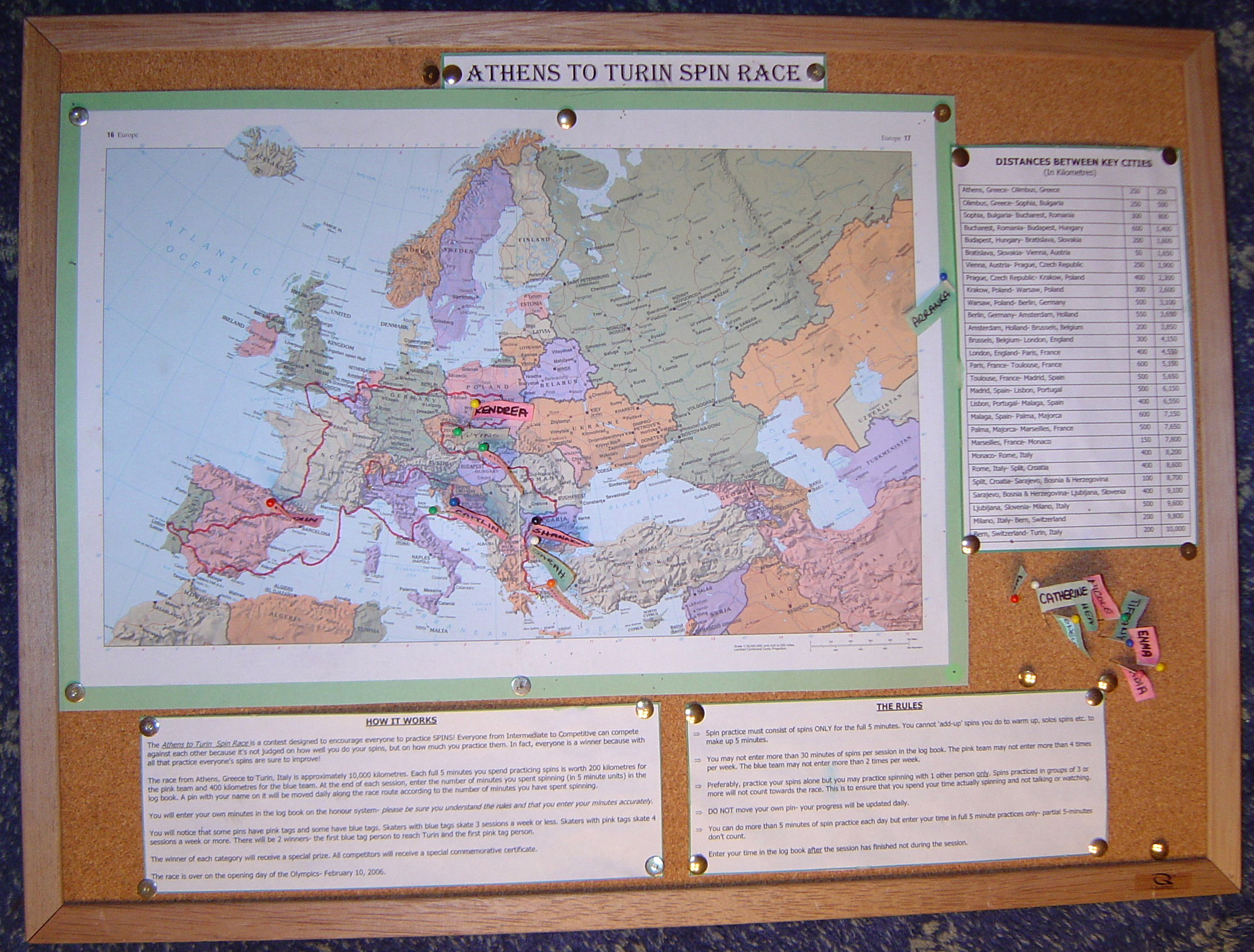
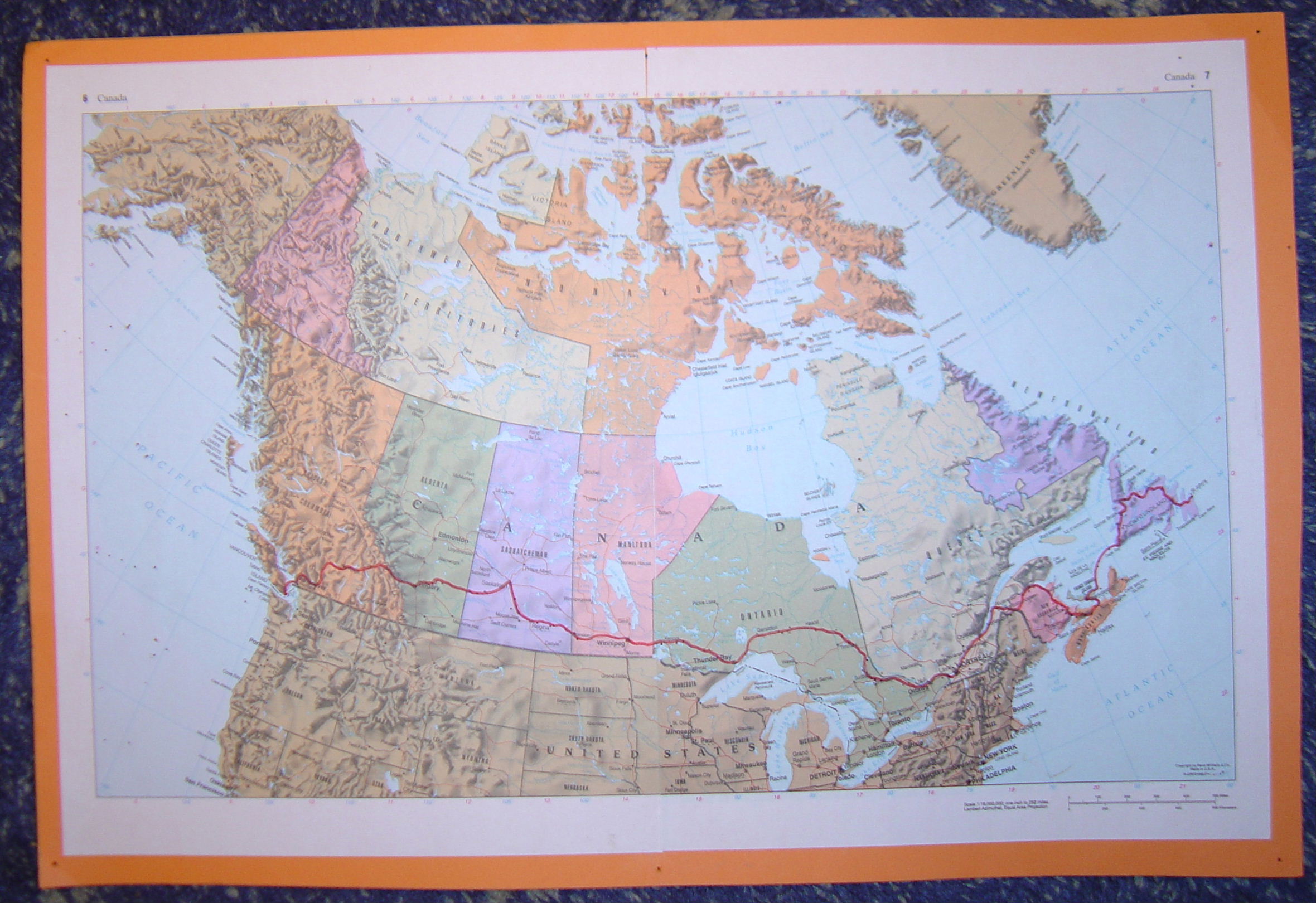
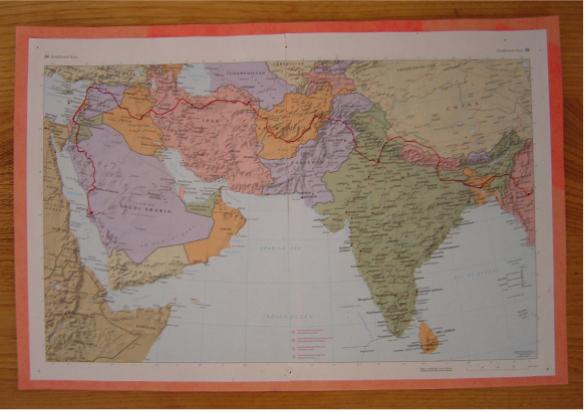
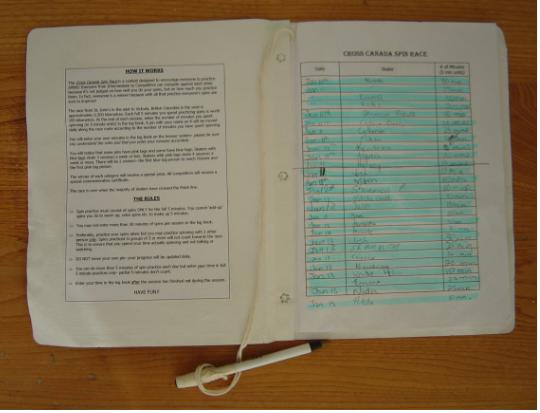
Link to pdf. file of Total Kilometres Record Sheet
Link to pdf. file of Key to Distances Between Cities

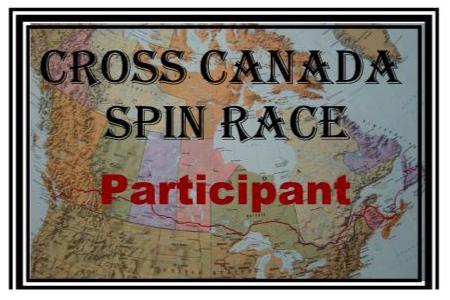
I bring the bulletin board out every day so skaters can see their progress but because I do this race with my own skaters and not the whole rink I place it far off to the side so the other skaters are not distracted by it.
If you find the game is moving too slowly have a 'Triple Your Spin Kilometres' Week. Each 5 minutes is worth 300 kilometres instead of 100.
I have used prizes like a T-shirt with Spin Race Winner on it, a chamois, blade covers and other little items from the skating store.
Do spins in a group format especially with the Juniors so they can get their time in but with proper supervision.
The Christmas Game
Goal: Knowledge of skills, proficiency in performing skills under a little pressure. I find this game particularly useful for introducing CPC language and skills
How long does it take to complete?: 1/2 hour to an hour depending on the number of participants
How many can play?: As many as you like
Level: All levels can compete together. Skaters compete individually but it could be adapted for teams.
What You Will Need:
1 Present bag with lots of small gifts from the dollar store such as gel pens, candy, special stickers,
hair clips etc.
1 Gift bag for each level of skills. The number of bags depends on the number of levels playing. Six
bags should cover from working on a loop jump to working on double lutz combination.
20-30 tags for each bag with different skills written on them appropriate to that level. Some should be
well known, others should be fairly new ones. Write the name of a skill on one side and the
number of the bag it comes from on the other. This is important as the tags will get mixed up and
labeling them makes it much easier to set up for the next game.
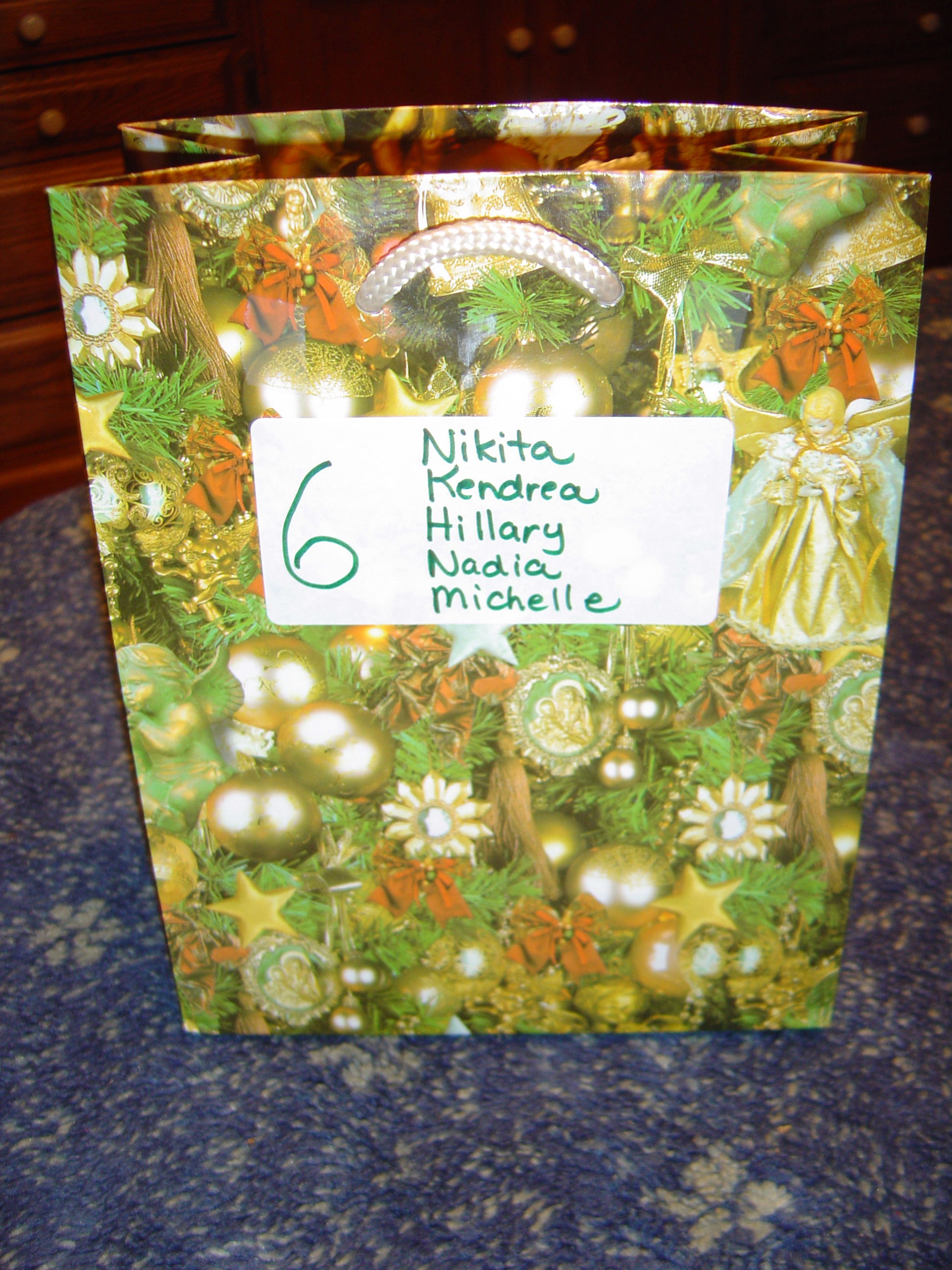
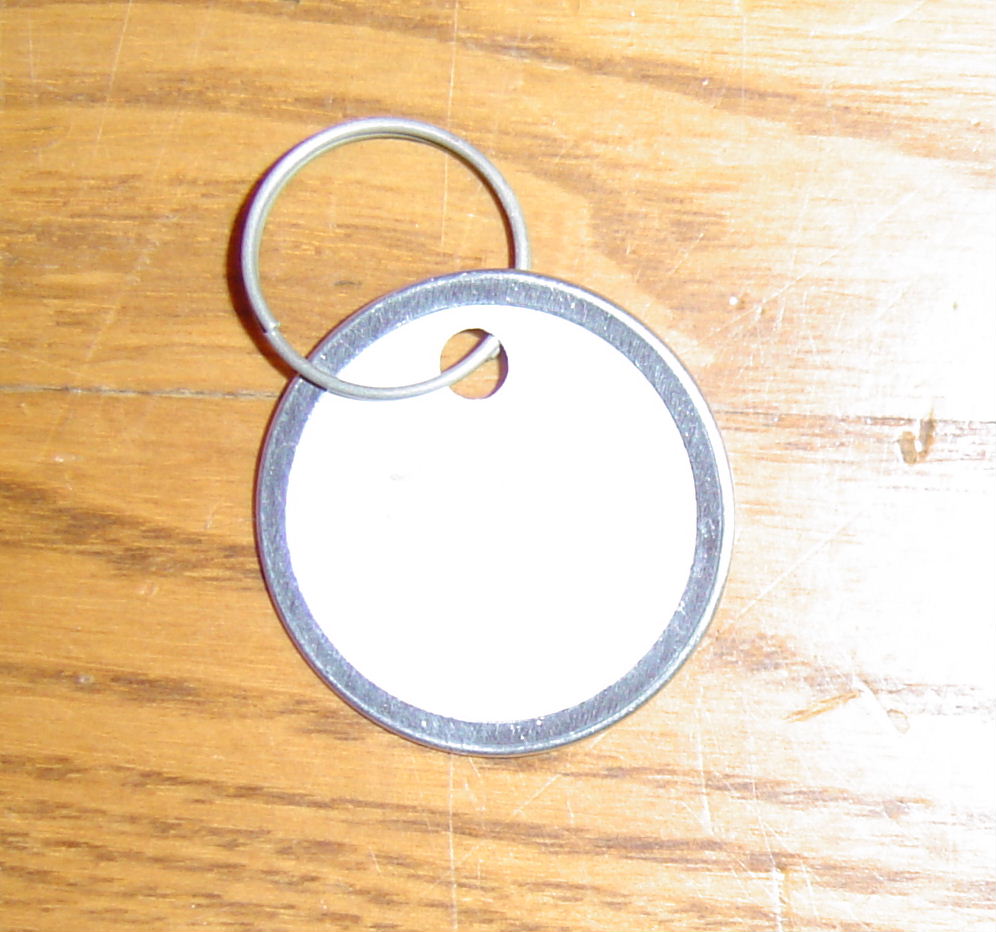
LSp
(A Creative Movement Exercise)
2F
Hip twist circle
Double Double combo
FCSp
BI Counters
One Foot Twist
FO Cross Rolls
1W with Set Up
Ina Bauer
BO Open Mohawk
Forward Lunge
BI Spiral
Spiralling Curve
T Stop
1Lo+1Lo+C
SSp
Figure 8 Stroking with BO Edge
FO Bracket
1Lz with Set Up
FI3, BI Mohawk Pattern
Russian Stroking
1A
If the skill is done correctly then the skater places her tag in her 'Yes' pile. If it is not done correctly it goes back in the bag. When a skater has done 5 skills (or whatever number you decide) correctly she gets to chose a gift from the present bag.
Know Your Turns (or Edges)
Goal: Knowledge of turns or edges.
How long does it take to complete?: 1/2 hour to an hour depending on the number of participants
How many can play?: As many as you like
Level: Junior
What You Will Need: 1 Marker- draw a chart like the one below at the side of the ice:
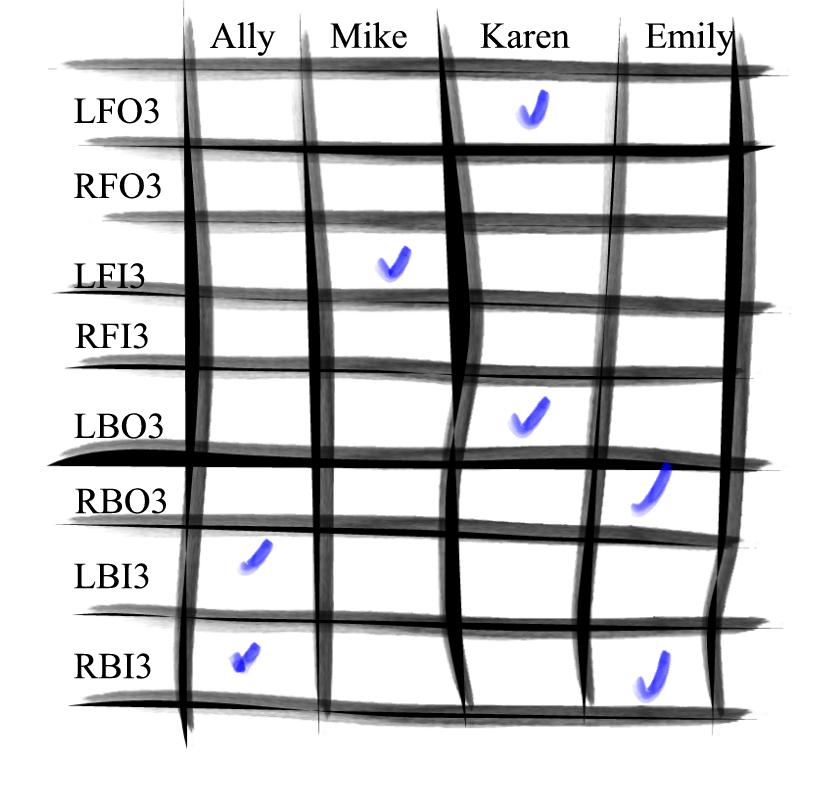

Do the same for each skater, skating one turn only then start again with the first skater. Make sure you call out the turns randomly, otherwise the skater will just be copying the one in front of him. Give as many turns as necessary to complete the chart. The game is over when each skater has completed all his check marks.
Pig Races
Goal: 100% Effort
How long does it take to complete?: Approximately 15 minutes from set up to finish. Could be used in a Stroking class
How many can play?: At least 1 skater per team to as many as you like within reason. Usually played with 2 to 3 teams. Any more could make it difficult to give 100% effort if the skaters perceive that they are crowded across the width of the ice. .
Level: Could be any level or a combination of levels as long as the teams are divided up evenly.
What You Will Need:
A long piece of fast exciting music- accelerating drums would be great!
A set of three small, cute, stuffed animals- one set for each team
A marker to draw the start line
Whistle
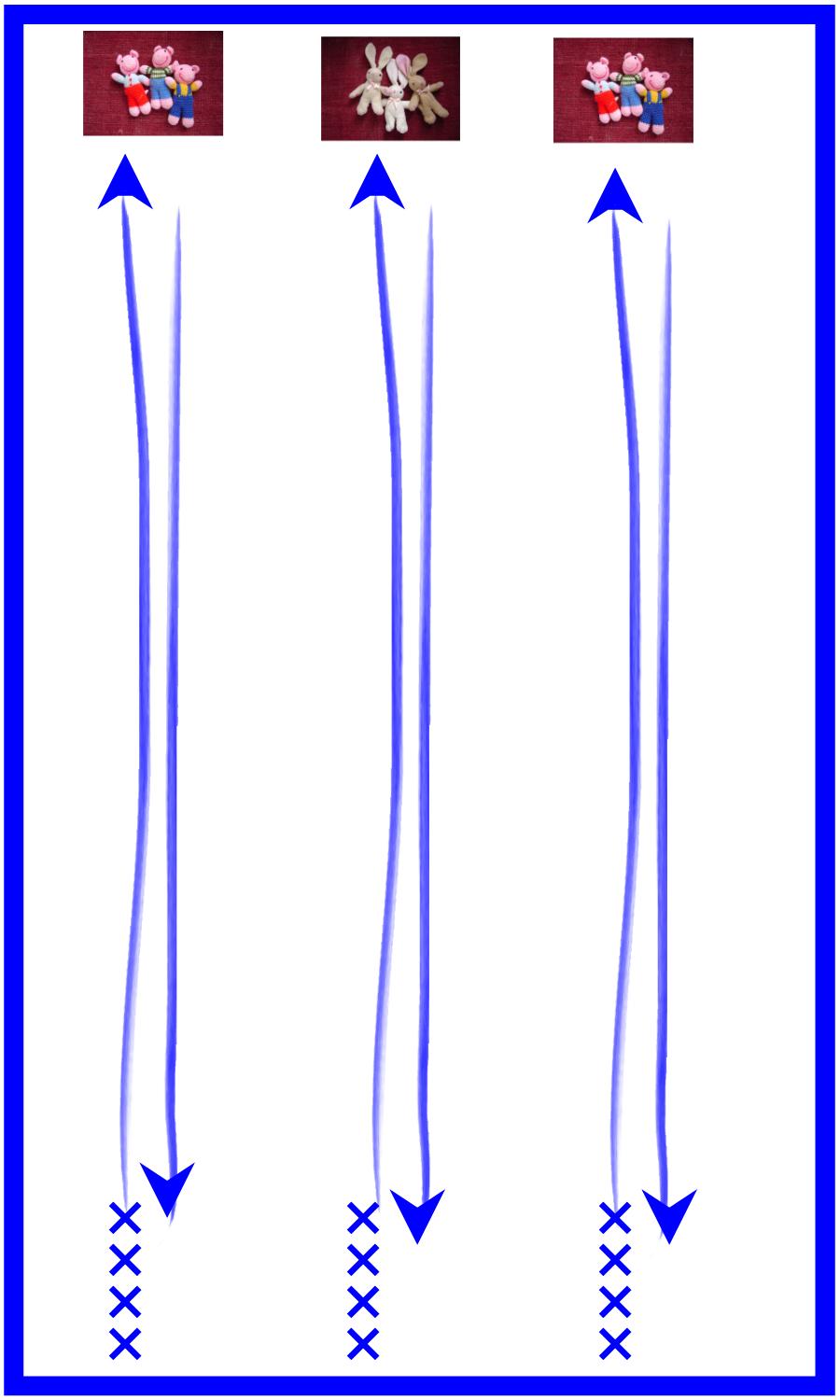
In a game in which there is one skater in each team the skater picks up a pig and brings it back with him and places it down at the end of the ice at the original end. As soon as he does, he can go and get the next pig and so on. Once all the pigs are retrieved the game is over.
Add On
Skaters have been doing this game for ages!
Goal: Increase creativity, range of skills, enthusiasm, courage
How long does it take to complete?: Depends on the number of skaters, type of game and number of games played but set aside at least 10-15 minutes.
How many can play?: 2 or more but best with no more than 3 or 4 players so skaters keep active and have a chance to try all the variations.
Level: Any level but skaters need to be evenly matched in skill
What You Will Need: No extra tools necessary
How To Play: There are a few versions of this game but the same rules apply. One skater does one thing. The next skater has to do that thing plus add something else after it. Then the next skater does the two things and adds one more and so on. The game is over according to the rules you have set out.
Spin Add On:
For example- Camel
Camel, Sit
Camel, Sit, Layback
Camel, Sit, Layback, Back Camel
Camel, Sit, Layback, Back Camel, Front Sit
. ..and so on.
Skaters must drop out of the game if they can't complete the entire spin. The game is over when no player can complete the entire spin. Set a rule about how many revolutions each postition must be.
Jump Add On:
For example- Axel
Axel, loop
Axel, loop, 1/2 loop
Axel, loop, 1/2 loop, double Sal
Axel, loop, 1/2 loop, double Sal, falling leaf
Axel, loop, 1/2 loop, double Sal, falling leaf, Split jump
...and so on
Skaters must drop out of the game if they can't complete the entire sequence. The game is over when no player can complete the entire sequence. Set a rule about quality.
Field Move Add On:
For Example: FO Spiral
FO Spiral, (FO3), BI Spiral
FO Spiral, (FO3), BI Spiral, I Ina Bauer
FO Spiral, (FO3), BI Spiral, I Ina Bauer, (2 x F Crosscuts) O Spread Eagle
FO Spiral, (FO3), BI Spiral, I Ina Bauer, (2 x F Crosscuts) O Spread Eagle, BO Pivot
...and so on
Skaters must drop out of the game if they can't complete the entire sequence. The game is over when no player can complete the entire sequence. Set clear standards for quality.
Create-A-Solo
A variation of Add-On
Goal: Increase creativity, remember steps
How long does it take to complete?: Depends on the number of skaters and their level. One typical game for 4 players at a high level might take 15 minutes.
How many can play?: 2 or more but best with no more than 3 or 4 players so skaters keep active and have a chance to try the solo frequently enough to remember it.
Level: Any level but skaters need to be evenly matched in skill
What You Will Need: One piece of music per game.
How To Play: One skater does one thing. The next skater has to do that thing plus add something else after it. Then the next skater does the two things and adds one more and so on. Try defining the type of movement beforehand. Not playing the music first tends to bring the focus onto the movement but another variation is to play the music first. In general, the less experienced the players are the more direction they may need. For them you can call out the categories of moves to do. For example:
Opening position
Opening position, introductory movement
Opening position, introductory movement, skate to a jump
Opening position, introductory movement, skate to a jump, do a spin
...and so on adding either a jump, spin, field move or connecting step until you determine that the skaters can no longer effectively remember the solo. At that point have the next skater(s) add concluding moves and a finishing position then play the music and everyone skates 'the solo' to that music. During the choreographic process have each skater perform the same solo but start at different places on the ice. That way, when the music is played the skaters are less likely to run into each other.
Abacus
Goal: improve consistency
How long does it take to complete?: usually can be done in 15 or 20 minutes. It depends how many skills are used.
How many can play?: Best with one so the skater doesn't get cold waiting but could be done with 2 alternating.
Level: Any level
What You Will Need: An Abacus or a marker
How To Play: the skater has 10 tries for each skill- could be a jump or jump combination or a spin. Each time the skater completes the skill, one bead on the abacus is moved over or a mark made on the ice with the marker. See how many beads the skater can get out of 10.
Dare, Double Dare, Triple Dare
Goal: get skaters to try skills they are afraid of or don't like
How long does it take to complete?: Just a few minutes each time but could last over several weeks.
How many can play?: one but can be played simultaneously with as many skaters as you like.
Level: Any level
What You Will Need:
Lots of poker chips or other markers.
A bag or box for each skill
How To Play: every time the skater tries the skill whether they do it or not, they get a chip added to their box. When the player has accumulated (for example) 100 chips, he gets a small prize. Of course the real prize is that the skill is likely to improve through repetition.
_________________________________________________________________________________________________
The opinions expressed on these pages are those of Cheryl Richardson, author of, Skating Ahead of the Curve. Every effort has been made to properly credit sources for other materials. You may link to my pages but please do not reprint or otherwise distribute without my permission.
Seminars Contact Site Index